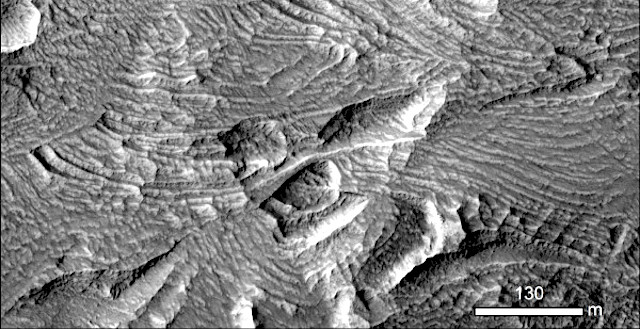 Planetary Geomorphology Image of the Month, August 1, 2018: One of the most environmentally diagnostic features of sedimentary rocks is cross-bedding, which occurs when sediment is transported by wind, water, or volcanic processes, resulting in horizontal strata composed of inclined beds.
Planetary Geomorphology Image of the Month, August 1, 2018: One of the most environmentally diagnostic features of sedimentary rocks is cross-bedding, which occurs when sediment is transported by wind, water, or volcanic processes, resulting in horizontal strata composed of inclined beds.
The geometry of cross-bedded sedimentary deposits provides information about the depositional setting and post-depositional history of the rocks, making the identification, measurement, and interpretation of cross-beds particularly interesting on Mars, where past conditions are of great scientific interest. This post describes cross-bedding in Upper Aeolis Mons in Gale crater.
One location on Mars where numerous examples of cross-bedding have been observed is Gale crater, a ~154 km diameter crater containing a ~5 km tall mountain of layered rock called Aeolis Mons (informally dubbed Mt. Sharp). The Curiosity rover landed in the northwestern crater floor in 2012 and has observed numerous outcrops of cross-stratified sandstone, providing evidence for an ancient fluvial system with sediment transport toward the southeast and occasional aeolian deposit… [More at link]








